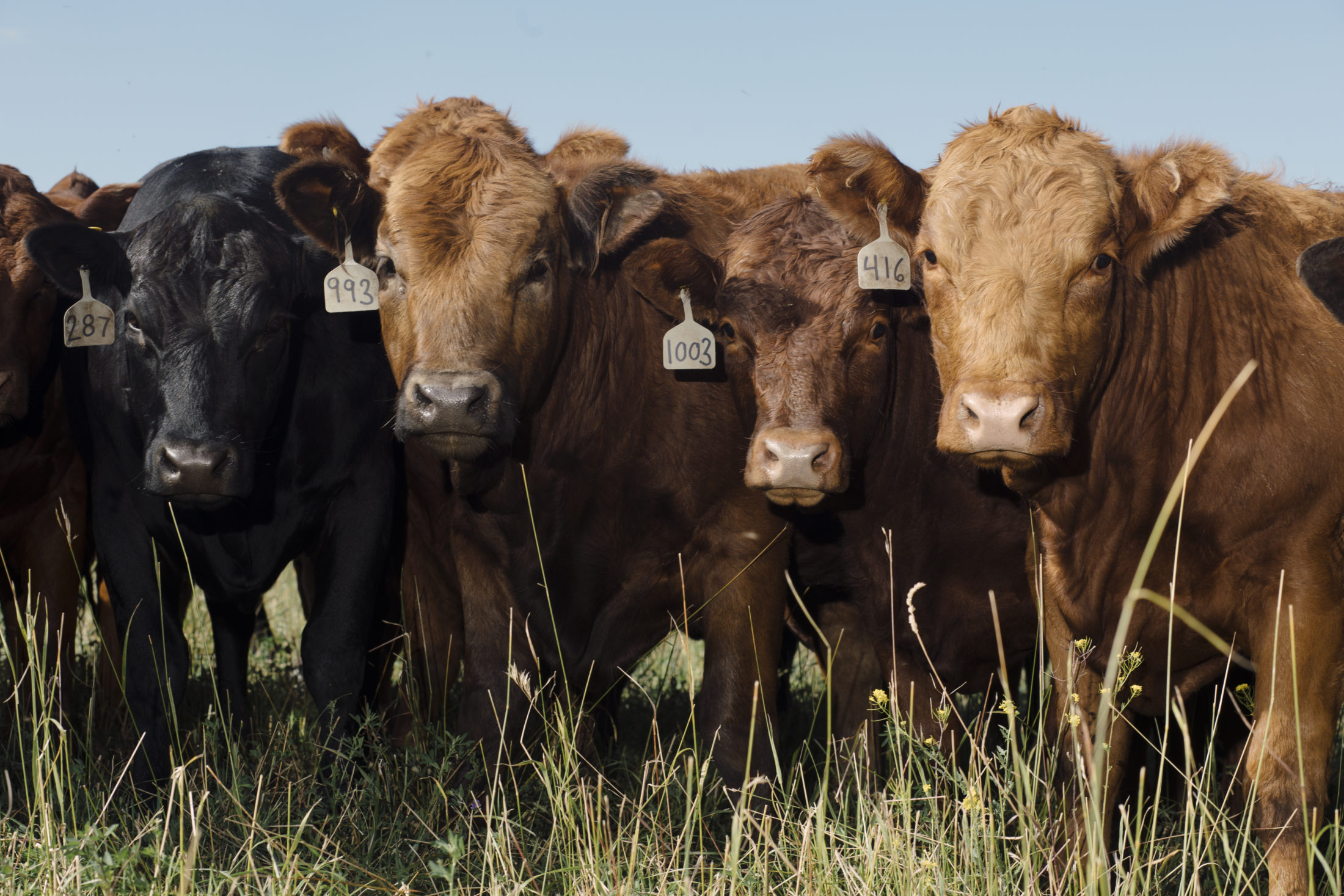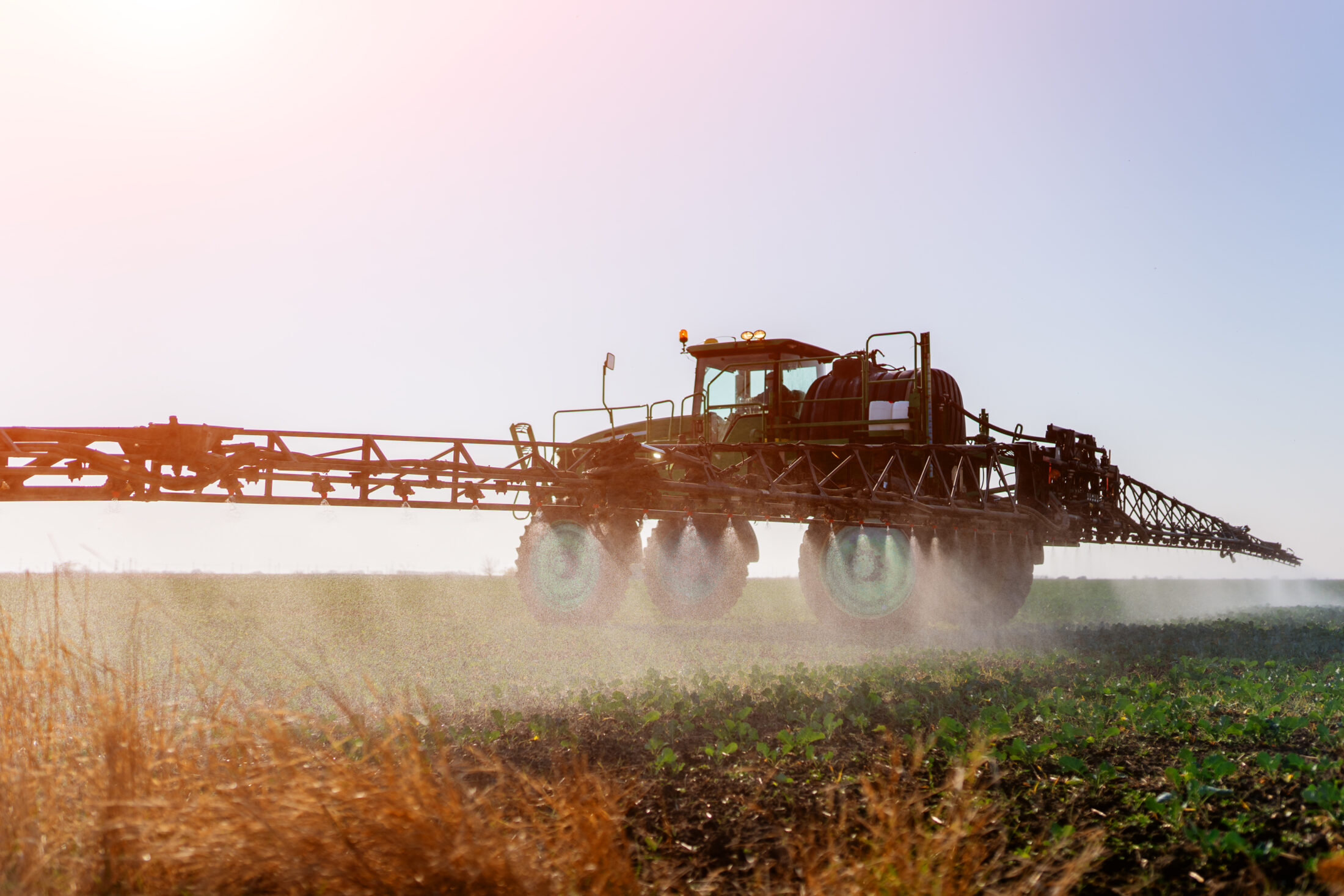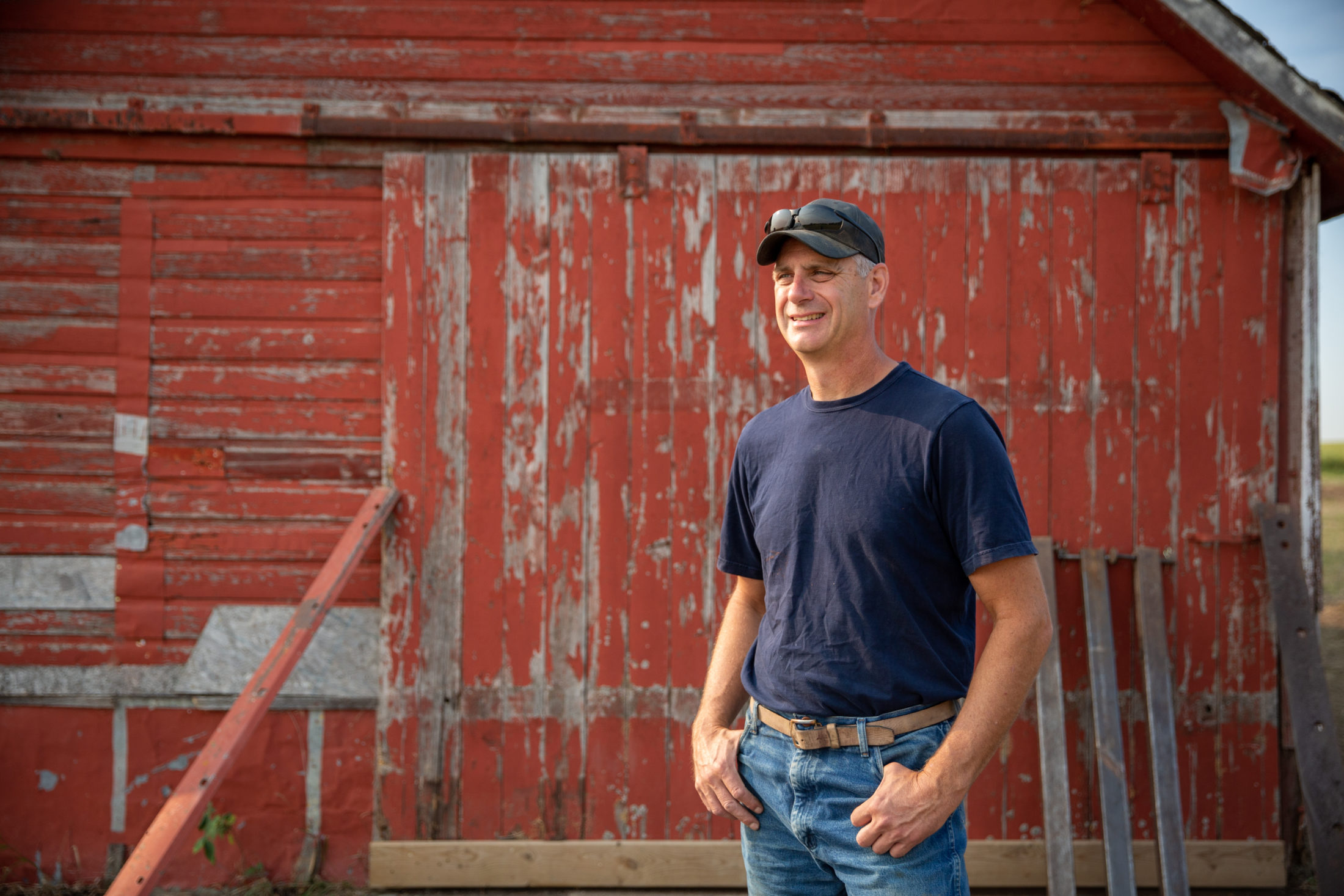
Two blank cheques: are Ontario and B.C. copying the homework?
Governments of the two provinces have eerily similar plans to give themselves new powers to...
This story is part of Carbon Cache, an ongoing series about nature-based climate solutions.
It’s a brilliant spring day in the flat, big-sky country near Iron Springs, Alta., an hour north of Lethbridge, where John Kolk farms 4,000 acres with his wife, son, two daughters and a small staff.
“The ducks and geese are making a racket and everyone is excited for spring,” he tells me when I call him to talk about new federal funding for farmers tackling climate change
.
Spring is a busy time of year, and Kolk is making plans for the rest of the season. He’s got two quarter sections — about 320 acres — of corn planned this year, and it’ll be out of the field by August. He has a decision to make: does he plant a cover crop for the fall?
Cover cropping involves the planting of a secondary crop for the off-season instead of leaving a field bare. It’s what Kolk calls leaving “a bit of a jacket on the field through the winter.”
The practice has numerous advantages: preventing erosion, retaining soil moisture and acting as a carbon sink.
A 2019 report from the National Academies of Sciences, Engineering, and Medicine found sequestering carbon dioxide from the air will form a significant part of the world’s efforts to mitigate the climate crisis, and noted agricultural lands can play a sizable role.
“When you’ve got live roots,” Kolk explains, “you’re taking carbon out of the air.”
But seeding a cover crop is not without its challenges. To really be effective in the region, the new crop has to be seeded before the old one dies off. Kolk has planted cover crops before, on four quarter sections of beans. “You don’t want to go drive on good beans in order to put a cover crop in,” he says. So farmers turn to aerial solutions.
His corn crop will grow to nine feet tall but won’t be gone until November, when new seeds would no longer germinate. Planting new seeds on two quarter sections covered in nine-foot corn stalks requires hiring a helicopter that needs to be equipped with expensive specialized equipment.
New federal funding announced in Monday’s budget could mean Kolk and other farmers will have the access to the funds to move forward with cover cropping and other carbon-reduction practices.
“If I know I’m going to get partly funded for that I will [seed that cover crop] this August,” he says.
“Of course I won’t be the only one,” he adds. “So then all of a sudden, there’ll be a demand for that service. And then the opportunity for more people to use cover crops.”
That’s the plan according to this week’s federal budget
, which includes $200 million in new funding for increasing the adoption of climate-friendly practices like cover cropping, nitrogen management and rotational grazing. It also allocates $10 million over two years to facilitate a transition to clean energy from diesel-fueled farm equipment and earmarks another $60 million for the preservation of existing wetlands and trees on farmlands.
It’s what Farmers for Climate Solutions, a coalition of farming organizations across Canada, described as “unprecedented” funding.
“This is one of the largest investments we’ve ever seen for agriculture in the federal budget,” Karen Ross, the director of Farmers for Climate Solutions, tells The Narwhal. “I was thrilled.”
For agriculture advocates, the budget signifies the government is recognizing the industry’s potential to combat the climate crisis using already-accepted farming practices.
“Agriculture can play, and is playing, a big role in climate change mitigation,” Chris van den Heuvel, a vice president with the Canadian Federation of Agriculture, says by phone.
“Agriculture needs to be recognized … as one of the sectors that can help in the solutions for climate change,” he added.
Four thousand kilometres across the country, Cedric MacLeod has 120 head of cattle — “beating hearts” as he calls them — on his 400-acre farm near Centreville, N.B.
Included on that farm is a wetland formed from an old dugout that he’s been considering filling in for more grazing land. The other, more expensive, option would be to leave it and allow a wetland habitat to flourish.
“Those are the kind of decisions a lot of producers are facing,” he says by phone from Fredericton, where, he tells me, the sun has finally come out on a cool spring day.
Expanding the wetland and allowing native milkweed to grow, he says, could help create habitat for monarch butterflies, along with local songbirds, migratory birds and amphibians. Wetlands also act as a carbon sink. A 2017 study published in the Proceedings of the National Academy of Sciences reported that the preservation of ecosystems like wetlands, forests and grasslands could add up to more than one-third of the emissions reductions needed under the Paris Agreement.
But preserving wetlands on a farm can be an economic decision — one that can be difficult in a sector already facing tight margins.

Areas like the Lomond Grazing Association lease in southern Alberta preserve untilled native prairie and wetlands. The recent federal budget earmarked funding for farmers and ranchers to preserve existing wetlands, as well as trees, which are well-known carbon sinks. Photo: Amber Bracken / The Narwhal
The new federal funding for agricultural climate solutions could make those decisions a little easier.
The allocation of $60 million of federal funding over the next two years for protection of wetlands and trees on farms could potentially help make his decision an economic one as well as a climate-friendly one, MacLeod says.
Helping farmers square good climate decisions financially is something people working in agriculture say is the best way forward when it comes to reducing the climate impact of the industry.
It’s “the first time that there’s been a deliberate attempt to incent good agronomic practices that will help to capture carbon,” Kolk says. “So we know a lot about it, we’ve heard a lot about it, [now we’re] putting the whole piece together.”
“I think that when you start incentivizing it, it’ll start to happen.”
The agriculture industry has long been lambasted as a significant contributor to Canada’s carbon pollution — it produces between eight and 10 per cent of the country’s total carbon emissions — but this year’s budget aimed to turn that idea on its head. “Farmers are major players in Canada’s fight against climate change,” it reads.
And that recognition is welcome news to those in the farming community.
Farming advocates like Ross, herself a vegetable farmer in Ontario, acknowledges that agriculture is responsible for a large chunk of national emissions. “We only have nine growing seasons left [until the 2030 Paris Agreement goals],” she says. “And for farmers to be part of the solution we of course need to meaningfully reduce these emissions.”
“But the thing is, in order to shift our practices to ones that reduce emissions, there are often high upfront costs,” she added. That’s where Farmers for Climate Solutions has been advocating for federal funding.
With “public support to help us kind of manage those upfront costs, or share those upfront costs,” she says, the government is acknowledging the “role of farmers to be part of our climate solution.”
Macleod, the beef farmer in New Brunswick, agrees.
“We’ve always maintained that agriculture is 10 per cent of the problem and 20 per cent of the solution,” he says.

Agriculture has long been lambasted a significant contributor to Canada’s carbon pollution but the industry — and the federal government — is adamant agriculture is poised to be a leader in reducing emissions, particularly with public support in place in the form of financial incentives. Photo: Amber Bracken / The Narwhal
Among the other climate-friendly farming practices highlighted in the recent budget is nitrogen fertilizer management.
Fertilizer has been pegged as a significant contributor to the climate impact of agriculture. Some 70 per cent of crop farms apply fertilizer, according to Statistics Canada.
When fertilizer is applied in the wrong quantity or wrong location, it can end up as runoff.
When nitrogen fertilizer is lost as runoff, it ends up as a greenhouse gas. It has been estimated that as much as 20 per cent of nitrogen fertilizer is lost as runoff, which can end up being a significant contributor to carbon pollution.
“Nitrogen waste is bad for the environment, but it’s also bad for the farmer,” Ross tells me. “It’s just wasted money.”
Federal funding aims to help farmers reduce nitrogen runoff. One of the key ways farmers can pinpoint ways to reduce waste is to hire an agronomist who can come up with a tailored, specific plan for when, how and what rate fertilizer is applied, based on crop needs and soil conditions. But that costs money.
And for many farmers, these sorts of decisions will come down to what’s “good for the bottom line,” Paul Thoroughgood, who farms 2,000 acres of canola, green lentils, flax, spring wheat and winter wheat just south of Moose Jaw, Sask., says.
“Fertilizers are our largest expenses on the farm,” he says. “We recognize that there is a greenhouse gas implication to that. So by making the most efficient use of that fertilizer, it’s a double win.”

New federal funding to help reduce nitrogen fertilizer runoff could enable farmers to hire agronomists who can help identify the proper timing, rate and location of fertilizer application. It’s been estimated that as much as 20 per cent of nitrogen fertilizer is lost as runoff, which means increased carbon pollution. Photo: Shutterstock
Part of the recent budget includes earmarking $10 million for programs that will move toward “powering farms with clean energy and moving off diesel.”
That’s a big task.
According to a diesel industry group, diesel powers more than two-thirds of all farm equipment and is used to transport 90 percent of farm products in the United States.
“Right now, the number of diesel engines that we have running on a daily basis is very high,” Thoroughgood says, noting “a combine is awfully high horsepower, and it runs for an awfully long day, day after day.”
Decarbonizing such heavy machinery is challenging, he says.
But, he adds, “you never want to say never because, gosh, the advancements we’ve seen in my farming career are phenomenal.”
Thoroughgood points to recent moves from long-haul trucking companies to move toward electric or hydrogen fuel cell systems. If long-haul trucks can move to clean fuel, he says, farm machinery may well be on that path too — eventually.

Paul Thoroughgood’s farm in Saskatchewan relies heavily on diesel-powered machinery, as is the norm in North American agriculture. He doesn’t foresee that being phased out across the board in the immediate future, but is watching the adoption of clean technology in other carbon-intensive sectors, like long-haul trucking. Photo: Sara Hylton / The Narwhal
“That’s probably going to take a little bit longer timeframe,” van den Heuvel says of a large-scale move away from diesel. “But that doesn’t mean that it can’t be done.”
He points to opportunities for farmers to use biodiesel in tractors or to switch to clean-powered grain dryers.
But, he adds, “the technology and the infrastructure has to be there in place and and ensure that whatever happens in the end ultimately doesn’t end up costing us too much.”
As many farmers are quick to point out, they compete in international markets on prices and feel they have little ability to pass additional costs down to consumers.
As part of the federal budget, the government has moved to address one longstanding concern of many in the agriculture industry: what they see as the financial punishment of carbon pricing.
The budget acknowledges that farmers require natural gas and other fuels affected by carbon pricing in their operations, and announces that the government intends to return a portion of funds brought in through carbon pricing directly to farmers, to the tune of an estimated $100 million next year. The return of carbon price proceeds will only apply to jurisdictions without their own carbon-price schemes, including the Prairie provinces and Ontario.
Like all government plans, van den Heuvel of the Canadian Agriculture Federation says, “the devil is in the details.”
Thoroughgood compares the recent budget announcements to other government programs created to incentivize what are known as beneficial management practices through grants.
Those grants, he says, “generally appealed to small farms, and didn’t do a great job of appealing to the larger firms, because their spending cap was so low that it was almost a rounding error for many people’s balance sheet.”
He wonders how the government will allocate the tens of millions of dollars it has earmarked to climate-friendly farming incentives.
“I hope that the government … looks at how they can make those funding programs relevant to a 30,000-acre farm, or a 50,000-acre farm — you know, something that’s really at scale that will really make a difference on the landscape,” he says.
“Figuring out how to make those programs attractive so that all farms find them interesting — not just the ones that are smaller scale — I think is absolutely critical if Canada wants to make a real impact on the agricultural landscape.”

Farmers and advocates say that the details of how new federal funding is allocated matter, and can’t be targeted to one specific size or type of farm operation. Photo: Sara Hylton / The Narwhal
Van den Heuvel agrees.
“There’s a depth and range of firm sizes, from very small operations, that might only be an acre or two in size, up to those firms that are tens of thousands of acres in size and larger,” he says from outside a barn on his fourth-generation dairy farm in Cape Breton, N.S.
“We just have to make sure that whatever [the government does] put in place is representative of the entire sector.”
Kolk is leery of targeting funding to one size farm or another, noting both approaches would come with potential pitfalls. Farmers, he says, will be responsive if there’s an incentive regardless of the size of their operation.
“If you drag a $20 bill through the gutter in Picture Butte, you watch how many farmers will grab it,” he says with a chuckle.
But at the end of the day, he believes what the government is aiming to do is about more than any one climate-friendly practice adopted by an individual farm.
“This is a culture change,” he says. “And culture is everybody, from running the three-acre market garden to the 50,000-acre Hutterite colony.”
The Carbon Cache series is funded by Metcalf Foundation. As per The Narwhal’s editorial independence policy, the foundation has no editorial input into the articles.
Get the inside scoop on The Narwhal’s environment and climate reporting by signing up for our free newsletter. On a warm September evening nearly 15...
Continue reading
Governments of the two provinces have eerily similar plans to give themselves new powers to...

Katzie First Nation wants BC Hydro to let more water into the Fraser region's Alouette...

Premier David Eby says new legislation won’t degrade environmental protections or Indigenous Rights. Critics warn...
